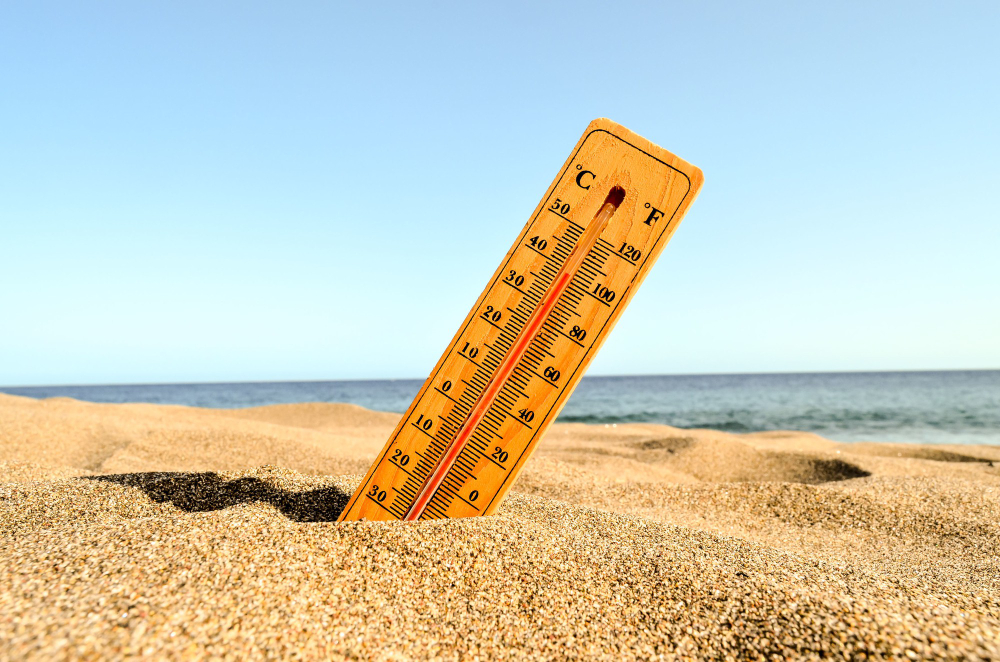Heat waves are periods of abnormally hot weather that last for several days or weeks. They can occur anywhere in the world, but they are most common in tropical and subtropical regions. Heat waves can be dangerous, especially for vulnerable populations such as the elderly, young children, and people with chronic health conditions.
Climate change is making canicular days more frequent and severe. This is because greenhouse gases trap heat in the atmosphere, which warms the planet. The warmer the planet is, the more likely dog days are to occur.

The Impact of Climate Change on Heat Waves
Climate change is impacting heat waves in a number of ways. First, it is making hot spell more frequent. For example, a study published in the journal Nature Climate Change found that the number of days per year with temperatures above 95 degrees Fahrenheit (35 degrees Celsius) is expected to increase by two to five days by the end of the century.
Second, climate change is making heat waves more severe. The same study found that the average temperature of searing heat is expected to increase by 1 to 3 degrees Fahrenheit (0.5 to 1.5 degrees Celsius) by the end of the century.
Third, climate change is expanding the geographic range of heat waves. In the past, heat waves were most common in tropical and subtropical regions. However, climate change is making heat waves more likely to occur in temperate regions as well.
The Health Risks of Heat Waves
Heat waves can pose a number of health risks, including:
- Heat stroke: Heat stroke is a life-threatening condition that occurs when the body is unable to cool itself down. Symptoms of heat stroke include high fever, confusion, and seizures.
- Heat exhaustion: Heat exhaustion is a less serious condition than heat stroke, but it can still be dangerous. Symptoms of heat exhaustion include fatigue, headache, and dizziness.
- Heat cramps: Heat cramps are muscle cramps that can occur during or after strenuous activity in hot weather.
- Heat rash: Heat rash is a skin condition that causes red, itchy bumps to appear on the skin.
Heat waves can also exacerbate existing health conditions, such as asthma, heart disease, and diabetes.
Protecting Yourself from Heat Waves
There are a number of things you can do to protect yourself from heat waves, including:
- Stay hydrated: Drink plenty of fluids, even if you don’t feel thirsty.
- Avoid strenuous activity during hot weather: If you must be active outdoors, try to do so in the early morning or evening when it is cooler.
- Wear loose-fitting, light-colored clothing: Loose-fitting clothing allows air to circulate around your body, and light-colored clothing reflects heat away from your body.
- Seek shade: When you are outdoors, try to stay in the shade whenever possible.
- Use air conditioning: If you have air conditioning, use it to keep your home cool.
- Check on others: Regularly check on elderly, young children, and people with chronic health conditions to make sure they are staying cool and hydrated.
Heat Waves and Antarctica Turning Green: A Dangerous Combination
Heat waves are periods of abnormally hot weather that last for several days or weeks. They are becoming more frequent and severe due to climate change.
Climate change is the long-term alteration of temperature and typical weather patterns in a place. Climate change could refer to a particular location or the planet as a whole. Climate change may cause weather patterns to be less predictable. A region might experience lower or higher than average temperatures. Climate change may cause more frequent and severe weather events, such as storms, floods, and droughts.
Antarctica is the southernmost continent on Earth. It is covered in a thick layer of ice, which reflects sunlight back into space. However, due to climate change, the ice in Antarctica is melting. This is causing Antarctica to turn green, because algae is growing on the exposed ground.
Algae is a type of plant that can grow in water or on land. Algae is green because it contains chlorophyll, which is a pigment that absorbs sunlight. Algae helps to remove carbon dioxide from the atmosphere, which is a greenhouse gas that contributes to climate change.
However, the algae that is growing on Antarctica is also absorbing sunlight, which is preventing the sunlight from being reflected back into space by the ice. This is causing Antarctica to warm up even faster.
So, how does all of this relate to heat waves?
The warming of Antarctica is contributing to climate change. Climate change is making heat waves more frequent and severe. Therefore, the greening of Antarctica is making heat waves worse.
In addition, the melting of the ice in Antarctica is causing sea levels to rise. This is increasing the risk of flooding in coastal areas, which can displace people and damage infrastructure.
What can we do to stop Antarctica from turning green and to reduce the risk of heat waves?
The best way to stop Antarctica from turning green and to reduce the risk of heat waves is to reduce our greenhouse gas emissions. We can do this by switching to renewable energy sources, such as solar and wind power, and by driving less and using public transportation more.
We can also help to protect Antarctica by supporting organizations that are working to conserve the continent.
Frequently Asked Questions
Q: What is the difference between a heat wave and a heat wave advisory?
A: A heat wave is a period of abnormally hot weather that lasts for several days or weeks. A heat wave advisory is issued by the National Weather Service when a heat wave is expected to occur.
Q: What should I do if I am experiencing symptoms of heat stroke or heat exhaustion?
A: If you are experiencing symptoms of heat stroke or heat exhaustion, it is important to seek medical attention immediately. In the meantime, you can try to cool yourself down by drinking fluids, moving to a cool place, and applying wet compresses to your skin.
Q: What can I do to help my community prepare for heat waves?
A: There are a number of things you can do to help your community prepare for heat waves, such as:
* Checking on elderly neighbors and relatives during hot weather.
* Volunteering at a local cooling center.
* Donating to organizations that provide assistance to people who are vulnerable to heat waves.Conclusion
Heat waves are a serious public health threat, and climate change is making them more frequent and severe. It is important to be aware of the risks of heat waves and to take steps to protect yourself and your loved ones.
